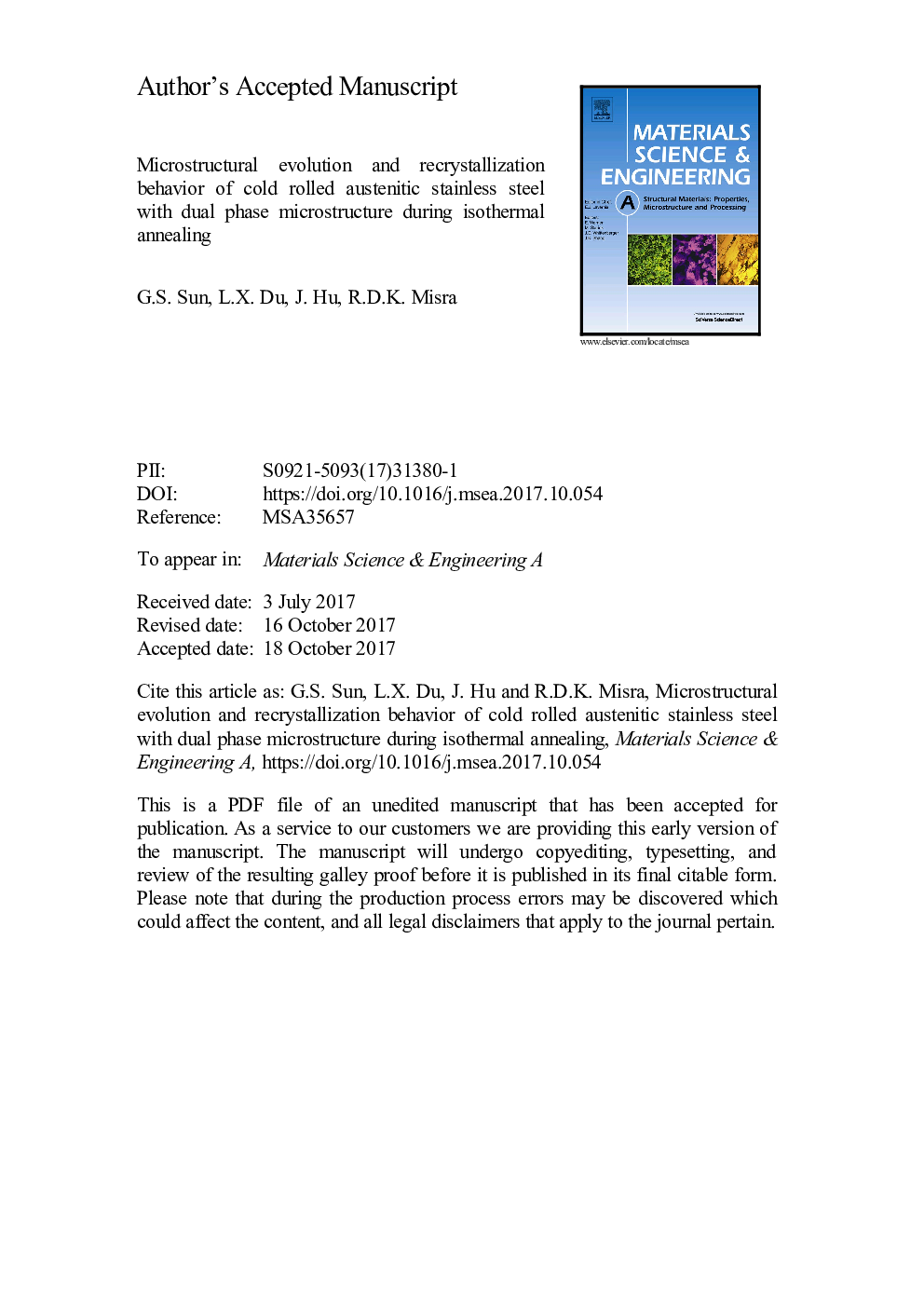| Article ID | Journal | Published Year | Pages | File Type |
|---|---|---|---|---|
| 7974630 | Materials Science and Engineering: A | 2018 | 28 Pages |
Abstract
In the present study, the concept of phase reversion developed by Misra's group (references 2ï¼4,14-16,25) was adopted to process a 304 austenitic stainless steel and explore the microstructural evolution, recrystallization behavior, and relate to mechanical properties. Dual phase structure, including strain-induced martensite and hardened austenite, was obtained by two-stage cold rolling at room temperature. Subsequently, the reversion of martensite to austenite during annealing was carried out and studied in terms of microstructural evolution and recrystallization behavior using a combination of X-ray diffraction, optical microscopy, and electron backscatter diffraction techniques. The Vickers hardness and tensile properties of samples annealed at different conditions were also determined. The X-ray diffraction study indicated that reversion of martensite occurred rapidly at temperatures greater than 750Â â because of the change in the reversion mechanism to shear-type reversion. The variation in hardness of annealed samples at 750-850Â â exhibited three distinct stages and corresponded to different process. Depending on the grain size and annealing conditions, different combination of yield strength (466-1758Â MPa) and ductility (6.6-57.5%) were obtained.
Related Topics
Physical Sciences and Engineering
Materials Science
Materials Science (General)
Authors
G.S. Sun, L.X. Du, J. Hu, R.D.K. Misra,
